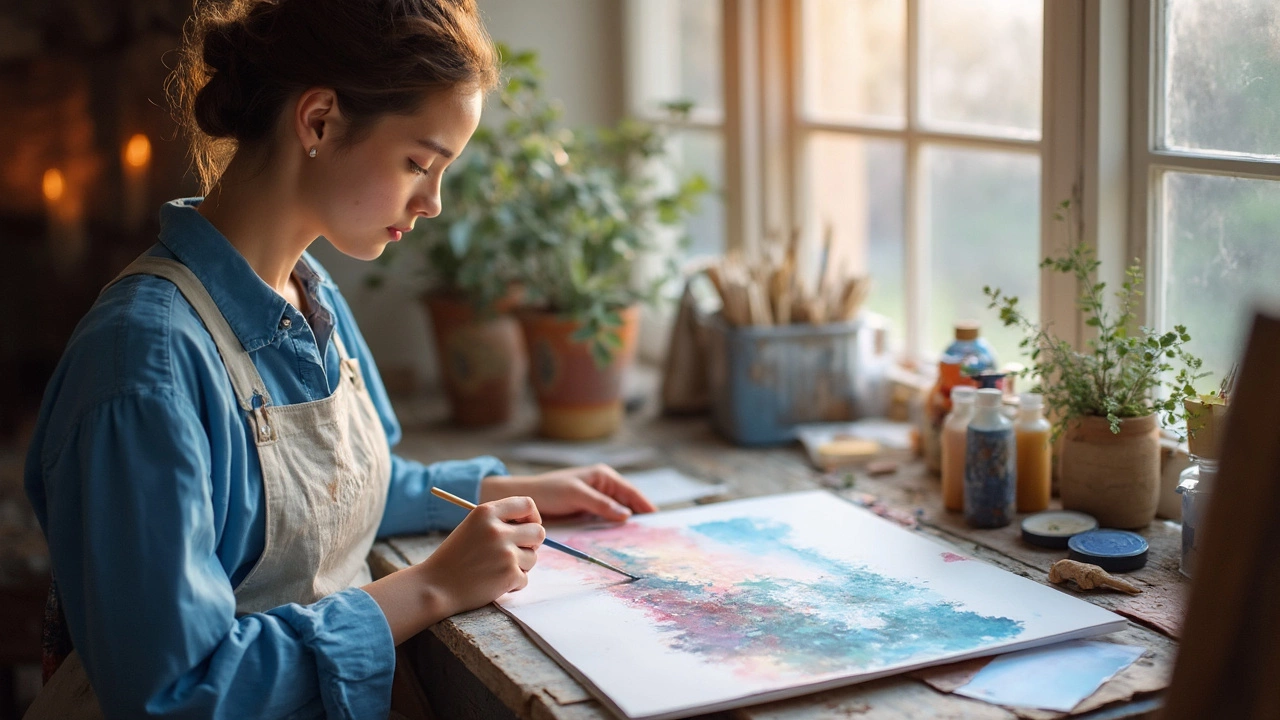Prevent Hard Lines: Simple Ways to Keep Your Art Smooth
Hard lines can make a painting feel stiff or a drawing look unfinished. The good news? You don’t need a magic brush to fix them. With a few everyday habits you can keep your work soft, blended and professional.
Pick the Right Tools and Materials
First off, use brushes that match the medium. A soft sable brush works wonders for oil glazing, while a synthetic round is perfect for watercolor washes. Make sure the bristles aren’t too rigid – a stiff brush will drag paint and leave hard edges. For pencils, choose a medium‑hard lead (HB‑2B) for sketching; it gives you control without carving deep lines that are hard to erase later.
Don’t forget your medium. Adding a tiny bit of medium (linseed oil for oils, water for acrylics) makes the paint flow better, reducing the chance of a dry, scratchy line. Mix only enough for the area you’re working on; too much fluid can make the paint run, but too little creates a crust that hardens fast.
Work While the Paint Is Still Wet
The easiest way to avoid hard lines is to blend while the paint is still wet. In oil painting, this means staying in the "fat over lean" zone – lay down thinner layers first, then add thicker ones on top. For watercolors, keep a spray bottle handy to mist the paper; a damp surface lets colors glide together instead of snapping into place.
If you notice a line forming, gently feather it with a clean, dry brush or a soft cloth. Light, circular motions soften the edge without ruining the underlying color. In acrylics, you can pull a slightly wet brush over the line before the paint sets – the fast drying time means you have to act quickly, but the result is a smooth transition.
Mind Your Brush Strokes
Every brush stroke counts. Try to use long, continuous strokes rather than short, choppy ones. When switching direction, overlap a little or lift the brush gently instead of stopping dead. Overlapping creates a natural gradient that hides any harsh border.
For detailed work, use a smaller brush and work in layers. Paint the base color, let it dry a touch, then go back with a translucent glaze to mute the edges. This technique is especially useful in portrait work where skin tones need subtle shifts.
Let Layers Dry Properly
Rushing the drying process is a big culprit behind hard lines. Even if the surface feels dry to the touch, the underlying paint may still be tacky. Give each layer a few minutes (or hours for oils) before adding the next. This patience prevents the new layer from lifting the dried paint and creating a ridge.
Use a fan or a low‑heat lamp for acrylics if you need faster drying – just keep the airflow gentle so you don’t disturb the paint surface.
Final Touches and Clean‑up
After the piece is finished, step back and look for any lingering lines. A soft, dry brush or a piece of tissue can rub away faint edges without removing color. For sketches, a kneaded eraser works like a pliable sponge; press and lift to smooth out hard pencil marks.
Finally, keep your tools clean. Dried paint on a brush tip can scratch the next layer, creating unwanted lines. Rinse brushes thoroughly after each session and store them flat or hanging to keep the bristles in shape.
Preventing hard lines is mostly about staying fluid, both in your materials and your technique. Try these tips on your next canvas or sketchbook – you’ll notice smoother transitions and a more polished result without any extra effort.

3 Mar 2025
Watercolor painting is enchanting but not without its challenges, with hard lines being one of the common hurdles artists face. This article delves into practical techniques to avoid those dreaded unintentional edges. From understanding paper absorption to mastering water management, these insights will help artists create smooth transitions. Learn the essential tips and inside tricks to enhance your watercolor art.
Continue reading...
